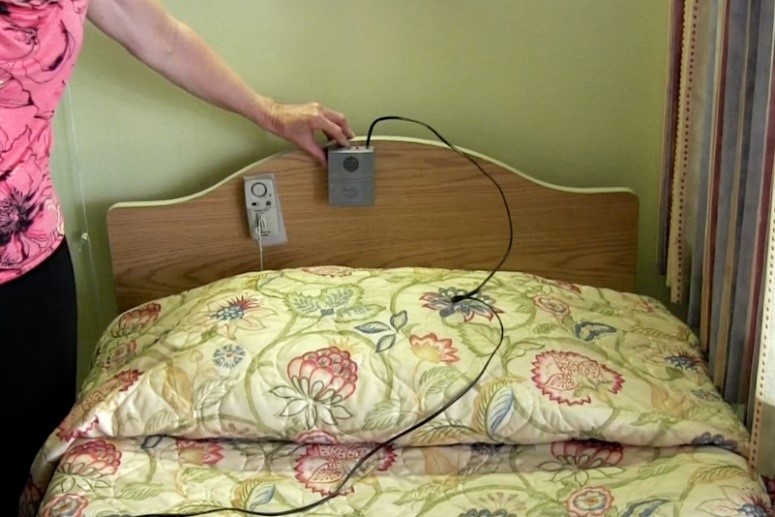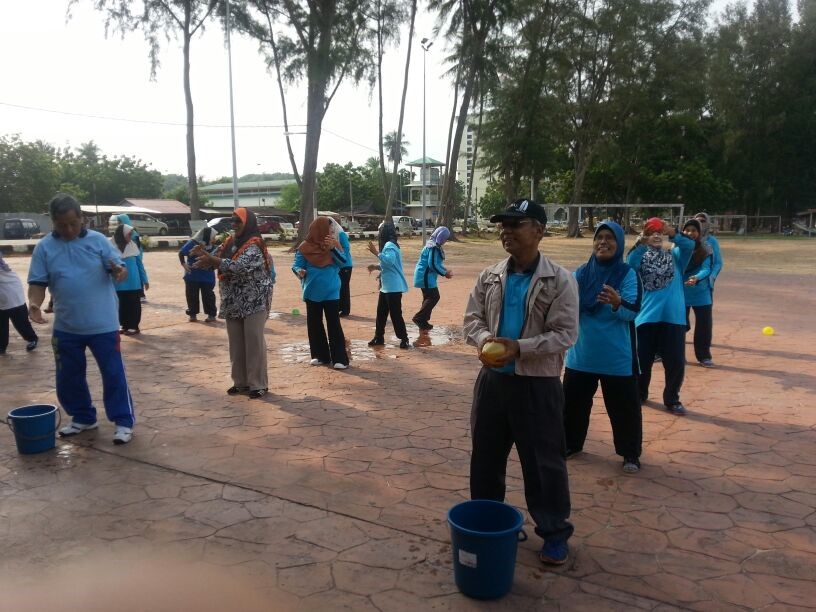Introduction
Nowadays, more and more elderly choose to age in a place where they used to live. They prefer to stay in environment that they are familiar with compared to living in an institution.
Ensuring safe living environment for elderly is crucial as to prevent injuries from falling particularly those who lives independently and with minimal supervision from family members. In the US, falls are the leading cause of injury and death among elderly aged 65 and above. Concurrent medical problems together with unsafe living environment make them prone to injuries due to fall.

Assessment of potential home hazards.
Home assessment is mandatory in order to identify and to remove potential hazards that may cause accidents, falls or illness.
- Maintain clean, clutter-free environment. Change bed linen regularly and remove potential source for dust and mould in order to prevent allergies and infection.
- Remove or tack down all scattered rugs as it can be slippery or cause injuries due to its frayed edge. Secure all carpet edges.
 |
 |
Photo 1: Carpet edges and rugs as a possible hazard in the house for elderly
Source : http://seniorswellbeing.com.au/aging-in-place/elderly-parents-living-alone-safe
- Avoid using slippery wax on floors. Wipe up spills promptly.
- Electrical cord wires connected to electrical appliances should be kept bound together and tucked away to prevent obstacles.
- Arranged furniture so that the elderly can have a clear and unobstructed path to move. Remove unnecessary furniture as less is better. Maintain familiar environment by maintaining household at similar places.
- Avoid chairs or sofas with wheels or too low position.
- All hallways and doorways should be obstruction free.
- Identify uneven or irregular floor surface and fixed it.
- Beds are at suitable height so that it is convenient for the elderly to get in and out of bed.
- Phones should be accessible from bed. Cordless phone would be useful. Maintain regular contact with family members.
- In the bathroom, remove the usual rubber mat with a non-slippery or adhesive one.
- Ensure good lighting in all rooms particularly at all stairs. Have a 2-way switch at staircase area which can be used at the top and bottom stairs.
- Leave a light on in the bathroom at night. Night light or motion light should be available on the path to bedroom.
- Room switches should be at the appropriate heights and reachable.
- Store sharp knives in a rack. Store heavier objects at waist level for easy use. Hazardaous materials stored safely.
- Put frequently used item eg tissues, drink, telephone etc within reach.
- Regular check on house maintenance including plumbing, electrical work, trash pick-up etc.

Home/living modifications.
House modification is necessary in making the house ‘elderly-friendly’. It should be tailored according to the person’s functioning disabilities or limitations and at the same time practical and conducive for them.
- Consider installing smoke alarms in each bedroom and kitchen. Keep a fire extinguisher in the kitchen would be helpful. Don’t forget to learn how to use and maintain it.
- Installing handrails around the bathing area and grab bars on the walls around the toilet can minimize them from risk of falling and for the ease of movement. Consider installing sturdy rails for all stairs inside or outside the house. Clearly mark all end of stairs (top and bottom).

- Put an adhesive strips on bath tub/ shower floor to minimize it from being slippery.
- Consider removing any lock in the bathroom doors as to prevent the elderly from accidentally locking the door or use door locks that can be opened from both sides.
- The toilet can be modified with a raised toilet seat. A higher rising toilet can also be installed
- Mark all ‘on’ and ‘off’ positions on appliances clearly with bright coloured labelling.
- Use big and bright coloured labelling and arrows pointing to areas that the elderly commonly reach eg toilet to assist elderly with reduced visual acuity.


- Use kettle with an automatic shut-off.
- Personal emergency response system is a way that an elderly can use to call for help. When the system is activated, the signal goes to the monitoring centre whereby it is link to the specific authority. This is useful particularly in elderly who stays alone. The panic alert button can be installed in the house or worn as a bracelet or necklace.

- Ensure that the elderly is able to use the telephone. Set the speed dial button or voice activated calls which can directly link the elderly to the family members or the authorities. Write down emergency contact numbers clearly and placed nearby the telephone.
- Decorations such as old photos or favourite souvenirs are a good way to create a stimulating environment for the elderly. It creates sense of identity and facilitates integration in daily living.
- Ensure that main door is secure with a peephole at eye level for viewing visitors before opening the door. Outside lamp should be bright enough for easily visualization of visitors.
Public and community facilities safety
Creating a supportive environment which includes physical and social environment for our senior citizens should be a joint responsibility between the higher authorities, local community and family members. Many of the elderly are still actively involved in many community activities. They still live independently and using public facilities including transportations in their daily living. Hence, these facilities should be adapted to make it more user friendly to the elderly.
- Community based geriatric care is an effort to provide services to elderly with chronic illnesses. Nursing institution is an ideal living environment for elderly who needs assistance in daily living or not suitable to stay independently.
- Many community based programmes are available and some are designed focusing for the elderly group. For example ‘Kelab Warga Emas’ or senior citizen club which is based in most Government Health Clinic in Malaysia. Keeping in touch with the community can make elderly more visible and at the same times one of the ways for obtaining safe social environment.
 |
 |
Photo 7: Example of community based programme
Source: Kelab Warga Emas Peringgit Community Health Clinic,Melaka.
- When using public transportations:
- Most public transportation like buses and LRT’s has dedicated seating for elderly. Use them.
- Know the route, pick-up time and charges that need to be paid. Let family member know when travelling or using public transportation.
- Wait in lighted and busy area.
- Be aware of the surroundings. Alert the driver if you feel uneasy.
- Use pedestrian crossings or traffic islands when crossing the road. Ask help from surrounding people or have company when needs to go out especially those with visual and physical limitations.
- Don’t attract attention. Avoid bringing a lot of cash in hands or wearing expensive jewellery.
- Carry hand phone for easy use during emergency.
- Carry pepper spray in hand for use when being attacked by strangers.
- Public facilities such as hospitals, post-office etc are now designed to accommodate the elderly. Hand rails, ramp, adequate signage are available for their ease.
- Avoid going out during extreme temperatures such as during very hot weather or raining. If still need to go out, where protective measures such as umbrella, hat, sunblock and drink plenty of water.
References
- Carter, S.E. et. al. (1997). Environmental hazards in the homes of older people. Age and ageing,26:195-202.
- Fuller, G. F. (2000). Falls in the elderly. Am Fam Physician, 61(7): 2159-2168
- Ho, P.Y. (2001). Creating a supportive environment for elderly with chronic illnesses. Hong Kong Polytechnic University. Healthy Aging Convention.
- Meeting safety needs of older adults. http://evolve.elsevier.com/World/geriatric
- Fom, M. et. al. (2006). Mortality Risk Factors Among Elderly.Rev Saude Publica, 40(6).
- Ali, A.J. et. al. (2003). Investigation of the prevalent fall-related risk factors of fractures in elderly referred to Tehran hospitals. MJIRI 27(1):23-30.
| Last Reviewed | : | 8 February 2017 |
| Writer | : | Dr. Nor Hazlin binti Talib |
| Accreditor | : | Dr. Ho Bee Kiau |







